| |
|
| |
 |
|
| |
 |
|
Isight
Automate Design Exploration and Optimization
|
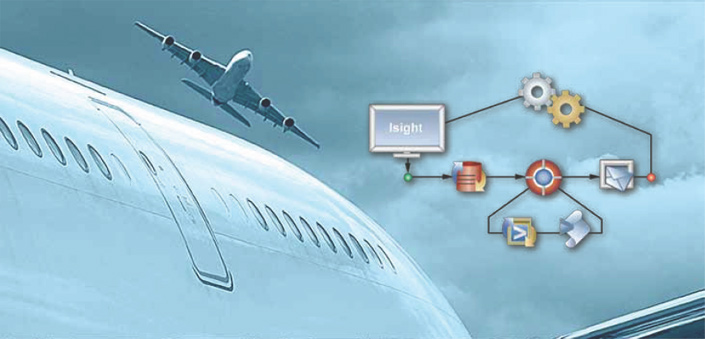 |
 |
Isight
Industry Challenges
In today’s computer - aided product
development and manufacturing
environment, designers and engineers are using a wide range of software tools to design and simulate their products. Often, the parameters and results from one software package are required as inputs to another package, and the manual process of entering the required data can reduce efficiency, slow product development, and introduce errors in modeling and simulation assumptions.
SIMULIA’s Isight Solution
|
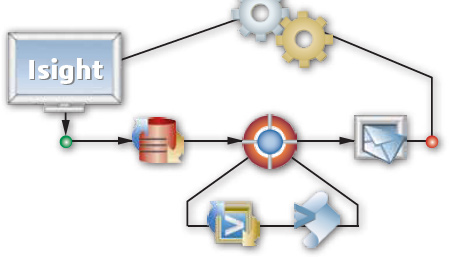 |
|
Isight provides designers, engineers, and researchers with an open system for integrating design and simulation models-created with various CAD, CAE,
and other software applications—to automate the execution of hundreds or thousands of simulations.Isight allows users to save time and improve their products by optimizing them against performance or cost metrics through statistical methods, such as Design of Experiments (DOE) or Design for Six Sigma.
Isight combines cross-disciplinary models and
applications together in a simulation process flow,automates their execution, explores the resulting design space, and identifies the optimal design parameters based on required constraints.
Isight’s ability to manipulate and map parametric data between process steps and automate multiple simulations greatly improves efficiency,reduces manual errors, and accelerates the evaluation of product design alternatives. |
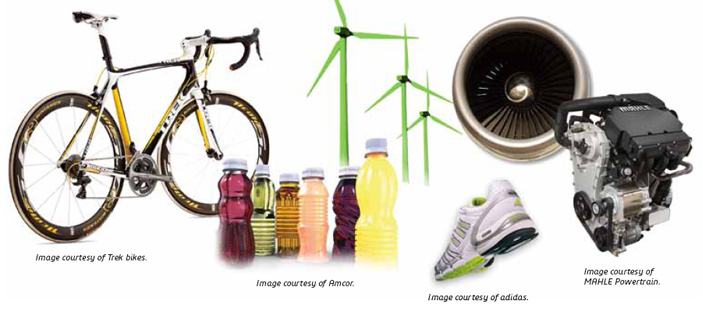
|
Open Component Framework
Isight provides a standard library of components-including Excel™, Word™, CATIA V5™, Dymola™,MATLAB®, COM, Text I/O applications, Java and Python Scripting, and databases-for integrating and running a model or simulation. These components form the building blocks of simulation process flows.
The direct link between Isight and the components allows for easy modification of a reference input deck, execution of the component, and the extraction of the output information.
A full-featured development environment, based on EclipseTM, supports the development of components, whereas the open API extends additional Isight capabilities. This open architecture allows SIMULIA and its
partners to offer a wide range of application components that provide a tighter integration with models developed in popular engineering software applications.
A component based approach makes it easier to
create process flows, reduce maintenance costs, and provides timely access to new components or updates through an independent release process.
Simulation Process Flows
The intuitive Design Gateway graphical user interface enables users to quickly create integrated simulation process flows, which couple simulation programs regardless of discipline, programming language, or format.
Isight provides drag-and-drop process flow creation,parameter mapping, and problem formulation.
In addition, Isight delivers branching, looping, conditional, and other execution logic. This flexibility,combined with scripts to alter the runtime behavior of the model as a function of changing parameter values,
allows the creation of highly reusable processes.
Once the process flow is defined, the user interface enables easy import of externally defined parameter values and problem formulations. Utilities such as model search, model content viewer, parameter search, and parameter grouping are also available.
From the Runtime Gateway, any simulation process flow created with Isight can be seamlessly executed on distributed hardware by the Isight Execution engine or the SIMULIA Execution Engine (SEE).
|
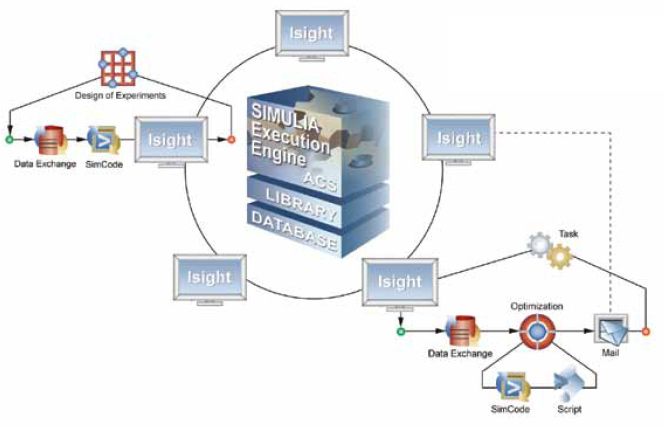 |
| Any simulation process flow created with Isight can be seamlessly executed on the SIMULIA Execution Engine from the Runtime Gateway. |
| |
Execution, Results Visualization,and Postprocessing
The Runtime Gateway enables desktop and distributed execution of engineering process flows. It also enables the creation of graphs and tables to visualize results. All job results are saved automatically to a locally managed database. The user interface supports the creation of visual tools for real-time postprocessing of data such as tables, 2D and 3D plots, and statistical analysis.
Isight provides interactive tools for visualizing parameter relationships as well as performance attribute tradeoffs with interactive approximations. Users can share these approximations with non-Isight users by exporting them to Excel. |
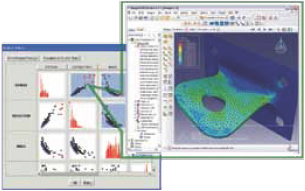
|
|
| Point cloud scatter plots of simulation results with run grading. Abstract data, like a stress field computed with Abaqus, can be visualized with one click in its native viewer. |
| |
Isight offers an extensive library of parallel process components to enable engineers to thoroughly and quickly explore the design space.
In the visual design driver you can trade off dozens of objectives with overlaid constraints in real time. |
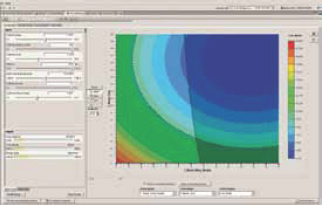
|
|
| |
 |
Design of Experiments
The DOE component enables engineers
to quickly assess the impact of various
design variables based on a set of objectives
and identify significant interactions. The
design data produced by DOE runs can also be used with approximation models for use with optimization methods.
|
| |
|
|
| |
 |
Approximations and the
Visual Design Driver
Isight offers powerful real-time tools to
interpolate results of computationally
intensive realistic simulations. Approximation models
are automatically cross-validated to ensure accurate
predictions. The Visual Design Driver allows users to see
their approximation models from many different views
and “surf” the design space graphically and interactively.
|
| |
|
|
| |
 |
Optimization
Isight provides a comprehensive selection
of parallelized optimization techniques
that can be applied to a variety of
problems. It also includes techniques that can
handle multi-objective optimization problems.
|
| |
|
|
| |
 |
Quality Methods
Isight provides stochastic methods that
account for variation in product designs
and their operating environment. The
Monte Carlo Simulation (MCS) component
offers an accurate method to address uncertainty and
randomness in the design process. It allows users to
sample the design space, assess the impact of known
uncertainties in input variables on the system responses,
and characterize the statistical nature (mean, variance,
range, distribution, etc.) of the responses of interest.
|
| |
|
|
| |
 |
Data Matching
This process enables simulation models
to be calibrated by minimizing any
variety of different error measures
using optimization techniques. Target data can be
imported as experimental or simulation results.
|
|
| |
Baker Hughes Reduces Development Time from
Months to Days
The use of expandable tubulars has emerged as a
popular technology for drilling and completing wells.
While expandable tubulars vary in type depending
upon the application and specific well requirements,
the most common approach is to actually form the
metals downhole, which presents unprecedented
challenges for tool designers. The costs and timelines
to achieve a “workable” product can be tremendous.
Baker Hughes has effectively leveraged realistic
simulation to address these impediments and
enhance their understanding of the mechanics and
effects of nonlinear/dynamic expansion of metals.
“If we hadn’t been using the software, the mosteffective cone geometry would have never been considered.”
Jeff Williams, project engineer, Baker Hughes
|
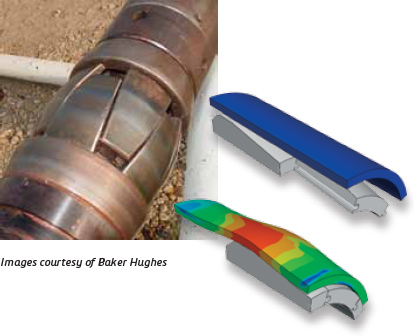
|
|
| |
Rolls-Royce Assesses Variability
to Achieve Robust Design
The airplane engine business is a highly competitive
market and gas turbine engines are at the leading
edge of technology development. In recent years, the
application of optimization techniques and simulationdriven
design during the development of engines has
become a standard practice. To ensure the safe and
reliable operation of the components and engine over
the complete lifetime and in all operating conditions, it is
important to look at the performance of the components
at the nominal design definition stage, as well as to
account for variabilities that may occur during the
manufacturing process and product lifecycle. Rolls-Royce
is using such techniques to shorten the development
time of gas turbines and reduce development costs.
“Why did we implement robust design at Rolls-Royce?
Because we realized, early on, that the sheer size and
complexity of the aircraft engine design and development
“problem” could only be mastered through
|
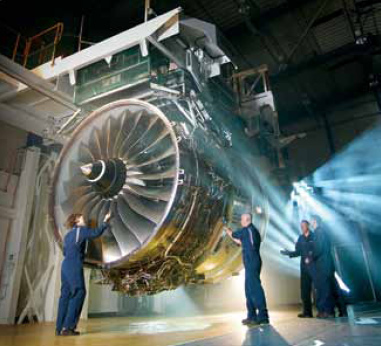
|
|
| a combination
of simulation, process automation and optimization.”
Alexander Karl, Lead, Robust Design, Rolls-Royce |
| The aircraft turbine is an extremely complex mechanical system. This
photograph is reproduced with the permission of Rolls-Royce plc, copyright
© Rolls-Royce plc 2009. |
| |
For more information log on to www.edstechnologies.com
To Know more, write us at : marketing@edstechnologies.com or Call us at : 1800 425 3378 |
|
| |
| |
|